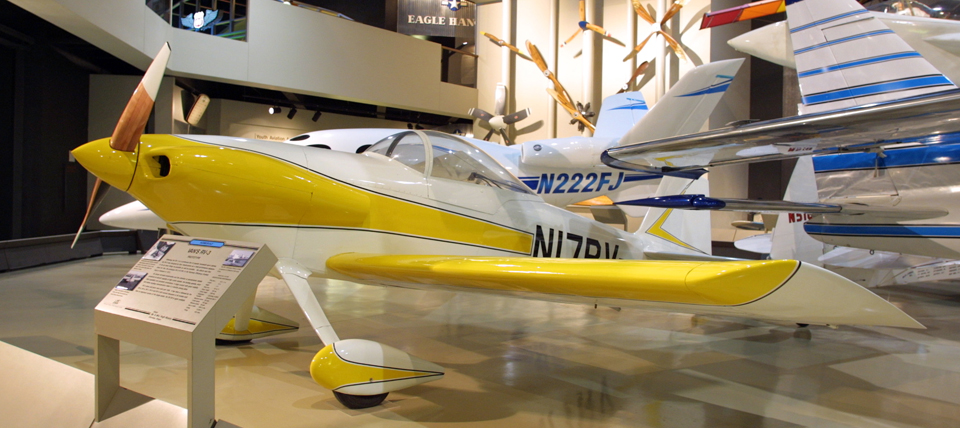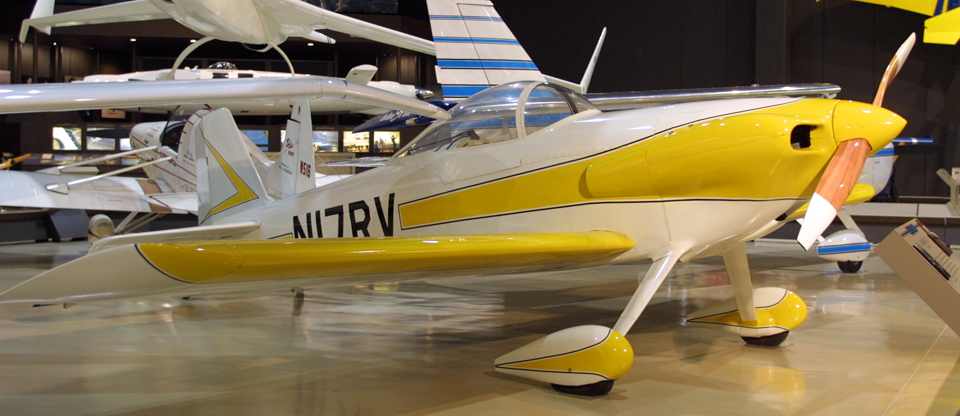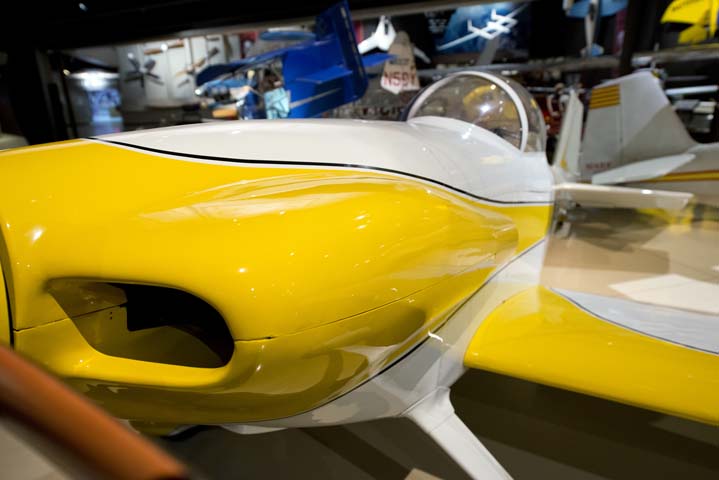1971 Van's RV-3 - N17RV
Location: Homebuilts
Before 1972, most homebuilt aircraft seemed to fall into one of two categories: fast and nimble and a handful to fly and land, or easy handling but “unable to outrun an asthmatic hummingbird,” as writer Budd Davisson put it in a 1973 flight review for Air Progress magazine.
When Dick VanGrunsven’s RV-3 prototype first appeared at the 1972 EAA Oshkosh convention, it didn’t attract a lot of attention. Even though the “Hershey bar” wing didn’t quite fit the stereotype of a nimble, hot airplane, the little all-metal, single-seat RV-3 could cruise at 175 mph on 125 hp, and was rated for full aerobatics.
But the RV-3 prototype was also surprisingly easy to fly. It taxied well, popped into the air in 200 to 300 feet, and climbed like a rocket. It stalled sharply but recovered easily and quickly. Its elevator and aileron response was crisp and sure. The airplane could gallop at 175 mph on 75 percent power or trot along at 110 with the canopy slid back. With full flaps it would land at 60 to 70 mph and roll out straight and true in just 200 to 300 feet.
In 1974, the RV-3 returned to Oshkosh for a record-setting win in the Pazmany Efficiency Contest, one of the first real-world evaluations of homebuilt aircraft performance. In a timed, level run, VanGrunsven flew the RV-3 at over 207 mph. In the slow speed run, the RV-3 clocked just under 54 mph. That gave the airplane an efficiency score of 11.77. The closest competitor scored 10.45 and the average efficiency score for homebuilts at the time was 6.8 – a little more than half the RV-3’s score.
A few years earlier, VanGrunsven had quit his job as a mechanical engineer to design and build homebuilt airplanes full time. His design goal for the RV-3 (and the series that it spawned) was “total performance” – an airplane that would do a lot of things well, even though it might not be the best in any one flight regimen. He also designed the RV-3 to be comfortable to ride in and uncomplicated to build. That philosophy has held up well over time and helped make the RV series among the most popular and best-respected homebuilt airplanes. By late 2015, the number of RVs built and flown had exceeded 9,000.
The RV-3’s combination of speed, handling, aerobatics, and gentle manners wasn’t entirely unique among homebuilts in 1972, but those qualities did set the airplane apart from the crowd. VanGrunsven’s company, Van’s Aircraft, produced and sold RV-3 kits until 1996. Popular demand later brought the kit back into production with a few refinements.
RV-3 No. 1 was rebuilt to flying status by EAA Chapter 105 in Portland, Oregon, with help from VanGrunsven.
|
Wing Span |
19 ft. 11 in. |
|
Wing Area |
90 sq. ft. |
|
Length |
19 ft. |
|
Height |
5 ft. |
|
Seats |
1 |
|
Empty Weight |
695 lbs. |
|
Gross Weight |
1,050 lbs. |
|
Engine |
Lycoming O-290-G, 125 hp |
|
Top Speed |
195 mph |
|
Cruise Speed (75% power @ 8,000 ft) |
185 mph |
|
Stall Speed |
48 mph |
|
Rate of Climb |
1,900 fpm |
|
Range |
600 mi. |





